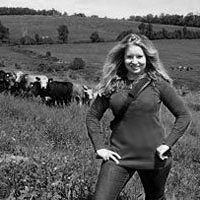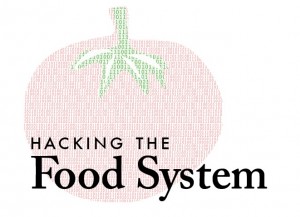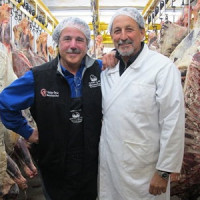[Due to the overwhelming response to our series Hacking the Food System, Food+Tech Connect will be continuing the conversation each Wednesday with a new post from a thought leader in the field. Read past posts exploring how technology, information and data can change the food system status quo and follow along as the conversation continues on Twitter (hashtag #foodtech), or Facebook.]
 As beef, lamb, and now pork producers in upstate New York, we need to create a market space for our farm. But direct marketing and “finding a market” has been challenging.
As beef, lamb, and now pork producers in upstate New York, we need to create a market space for our farm. But direct marketing and “finding a market” has been challenging.
For many farmers making the transition, direct sales can be a harrowing experience—and the skills that make one a great farmer might not be the same ones that make one a great marketer. There is definitely the feeling that one is building the food system oneself—one sale at a time. Not only do we need to be knowledgeable about meat quality and what goes into butchery, we need to maintain our inventory, communicate it to chefs, butchers and consumers via email or phone calls, keep up with ever-changing regulations, negotiate prices individually with chefs and butchers, and target those who want to buy our meat who live far away in urban areas – all while running a farm. Yes, it is a lot.
Tech could help to mitigate the stress and difficulty that farmers face when “doing it all alone.” A site could help facilitate relationships between buyers and farmers, help farmers with inventory, nurture knowledge that would help farmers make a better quality product and most importantly, help farmers connect with those that are interested in buying their product. What I envision is an active marketplace, but a digital one, where farmers can sell their goods, and buyers can make educated decisions based on transparency and an active social community.
A New York Times article on the farmer’s market glut speaks to the need for farmers to access more market channels. Sustainable food needs to be easier – it needs to be easy for the farmer and for the consumer too. I think price is a touchy subject, and many chefs or consumers might think they could not afford local meat; a site could be created where chefs and consumers could view the farms husbandry standards and their price and make a decision before delivery. Technology could help to mitigate the inherent inefficiencies that our farm faces with our meat distribution and marketing giving us fair price and consumers access to high quality, healthy local meat without a lot of hassle.
Seasonality is another issue that has a big impact on local meat. We have pork available all year long but our lamb is very seasonal and our beef can be too. In the Northeast most farmers harvest in the fall, which means many slaughterhouses can be booked well in advance. Thankfully, we have two USDA processors close to us, but the seasonal flux cuts into the profitability of small USDA plants and makes them vulnerable, which in turn makes our farm vulnerable as we depend on our USDA plants. A website that would help to connect farmers to chefs would also help processors because it could spread out the slaughter schedule more evenly throughout the year. Tech could become an invaluable glue in building our food system.
Last year’s meatopia fiasco where few chefs sourced from farmers they knew, speaks to the need to make relationships between farmers, butchers, chefs and distributors easier, more intuitive and less complicated. Tech could do a lot to connect those that are seeking high quality meats—it is all about building powerful tech tools to help connect people who want to help each other.






